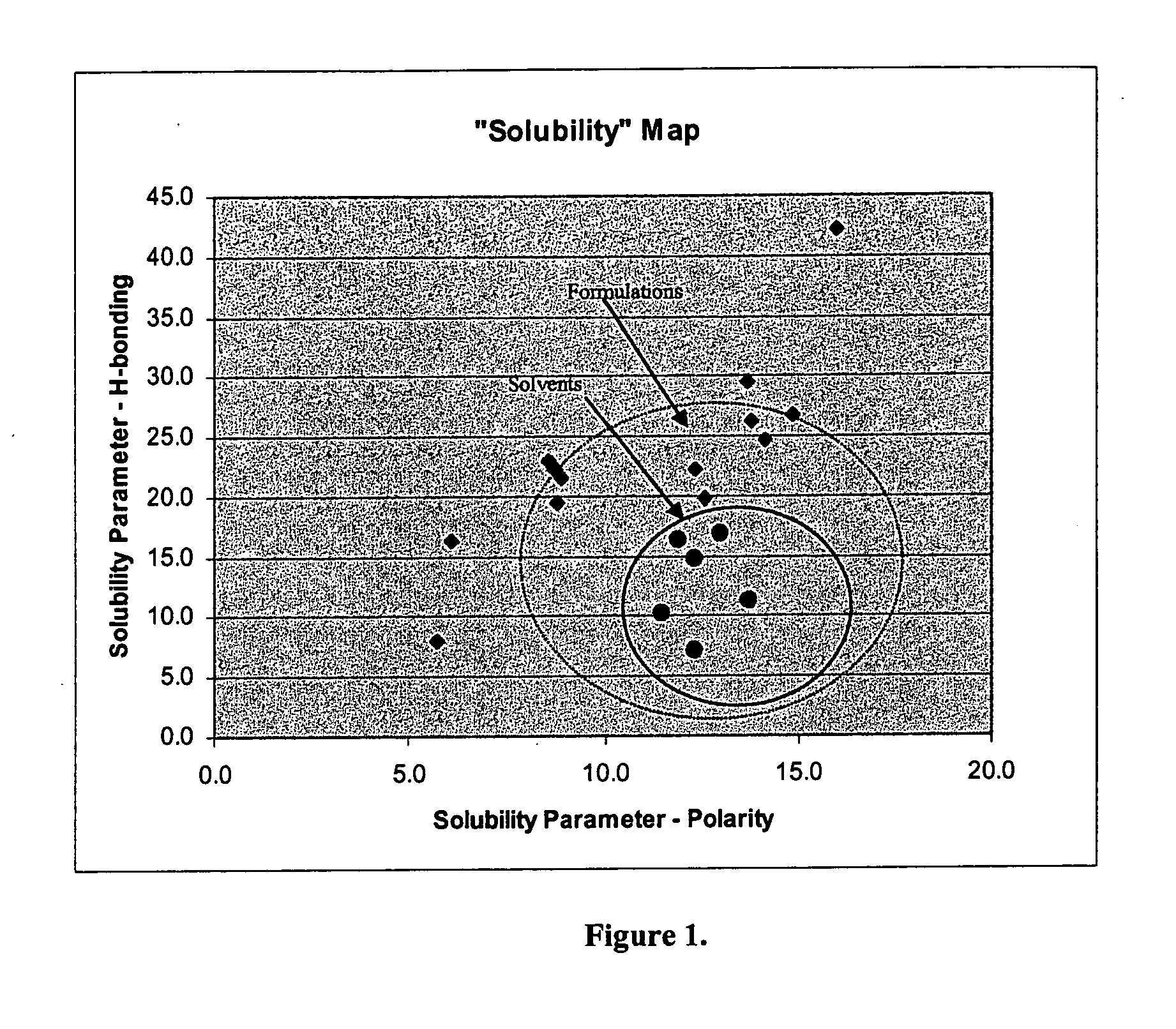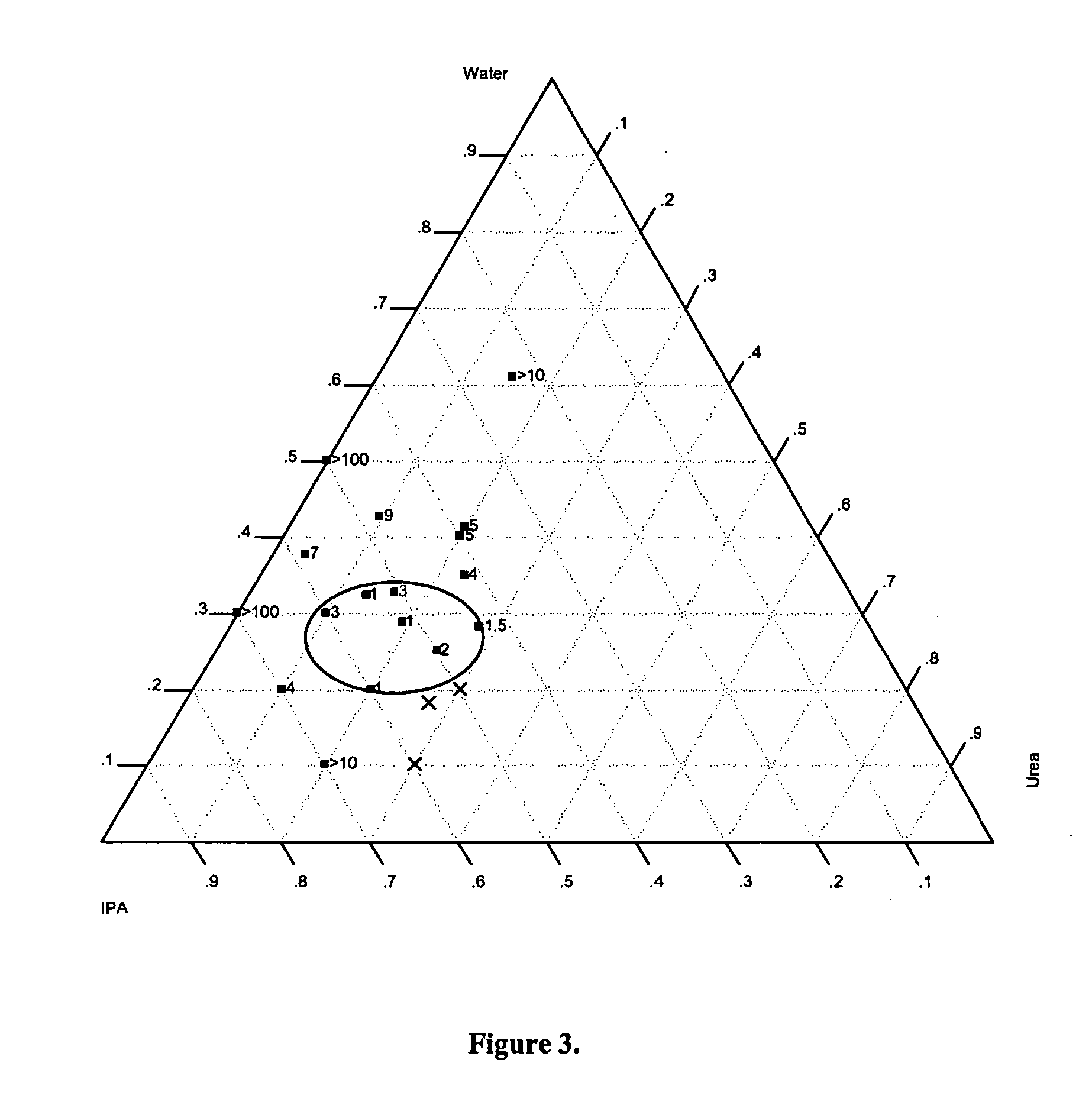Carbon nanotube stripping solutions and methods
a technology of carbon nanotubes and solutions, applied in the direction of coatings, chemistry apparatuses and processes, non-conductive materials with dispersed conductive materials, etc., can solve the problems of difficult and expensive process, inability to report in the art a patterning method of carbon nanotube-containing films, and the inability to cover large areas with electrodes. the scale up production is almost prohibitiv
- Summary
- Abstract
- Description
- Claims
- Application Information
AI Technical Summary
Problems solved by technology
Method used
Image
Examples
example a
[0047] Solvent and Mixtures.
[0048] The stripping abilities of different solvents and mixtures were tested based on the time used to make CNT / PET become insulating after sonication (up to 100 minutes as maximum testing duration). Surface resistivity Rs change verses time was used to compare stripping rates. When sample becomes insulating, sample is examined under 1000× optical microscope (or tested under high voltage) to ensure that the sample is totally free of carbon nanotubes.
[0049] Results of some solvents are shown in Table 1. As can be seen, there is a basic trend in decreasing stripping ability as follows: DMAC>NMP >DMF—>>50 / 50 water / NMP>methanol>50 / 50 water / DMF>50 / 50 water / DMAC>ethanol>IPA.
example b
[0050] Solvent Mixtures with Additive (Surfactant and Amine).
[0051] A sample was prepared from the composition of solution #51-124 (Table 2). This composition showed high selectivity, and was used to perform initial trials for circuit patterning. Additional patterning was performed using triethyl amine, which showed improved stripping rate. Stripping rates could also be improved by the addition of small amounts of silver powders and / or ZnO particles. These solvent mixtures with solid additives may be particles or colloid.
example c
[0052] Selective Circuit Patterning Using Stripping Solution #51-124.
[0053] A stripping solution with selectivity (#51-124) was used to develop samples of circuit patterning. One example used urea as an additive in the mixtures of water and alcohol (Table 2). With this mixture, other nitrogen containing material or polar molecules can be used.
[0054] Table 1 shows various solution compositions and their respective stripping capability. The stripping capability is measured as the time to completely strip off the CNT coating on a PET substrate (ST505) that has about 500 ohm / sq of sheet resistance. The sample was immersed in stripping solution and treated under sonication. Table 1 shows the phase diagram and the stripping time of each composition. The compositions falling into the circled areas of FIGS. 1 and 3 are the most preferred range. Their stripping time is in the range of 1-3 minutes. Table 3 provides calculated solubility parameters.
PUM
 Login to View More
Login to View More Abstract
Description
Claims
Application Information
 Login to View More
Login to View More - R&D
- Intellectual Property
- Life Sciences
- Materials
- Tech Scout
- Unparalleled Data Quality
- Higher Quality Content
- 60% Fewer Hallucinations
Browse by: Latest US Patents, China's latest patents, Technical Efficacy Thesaurus, Application Domain, Technology Topic, Popular Technical Reports.
© 2025 PatSnap. All rights reserved.Legal|Privacy policy|Modern Slavery Act Transparency Statement|Sitemap|About US| Contact US: help@patsnap.com



